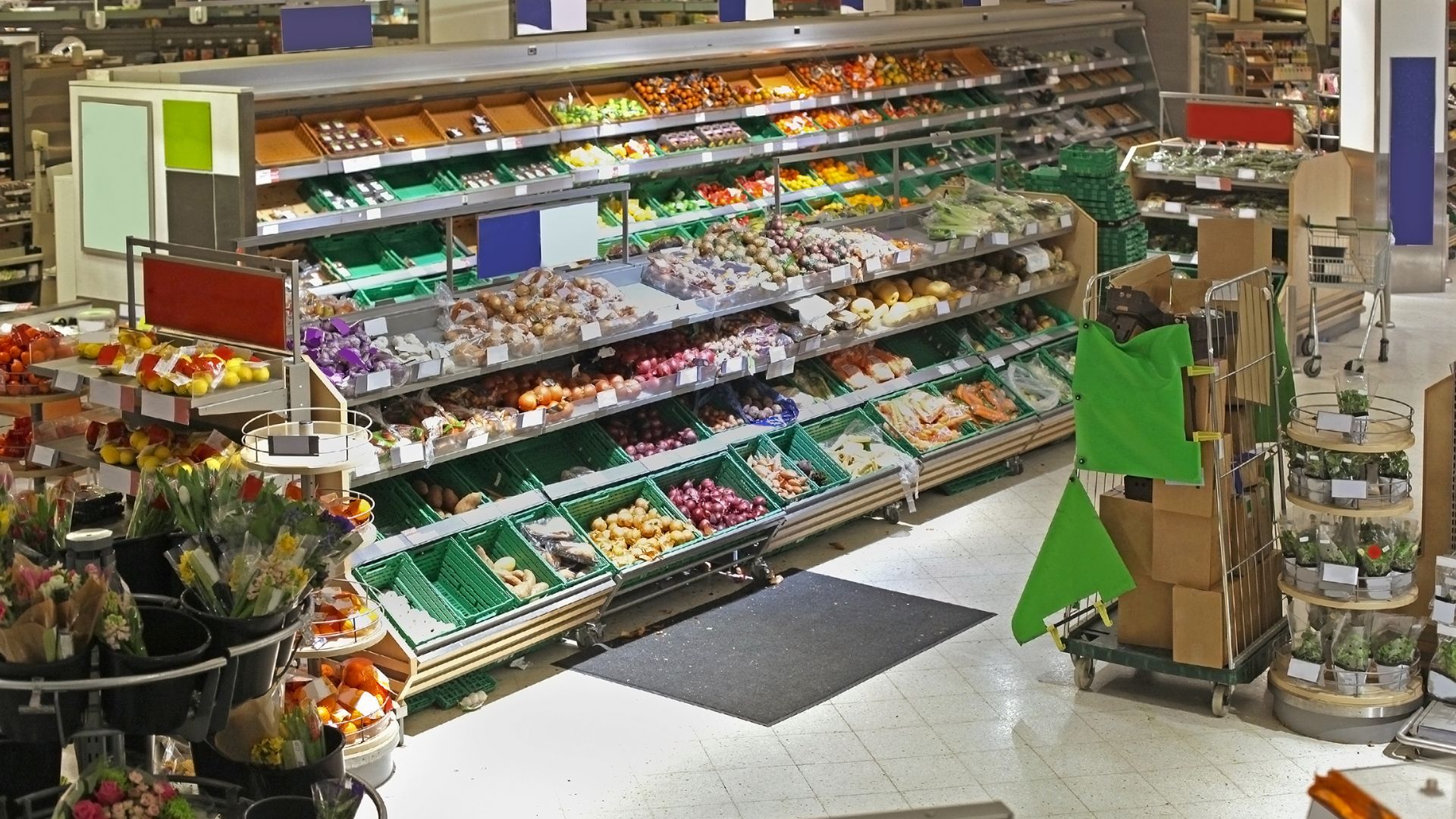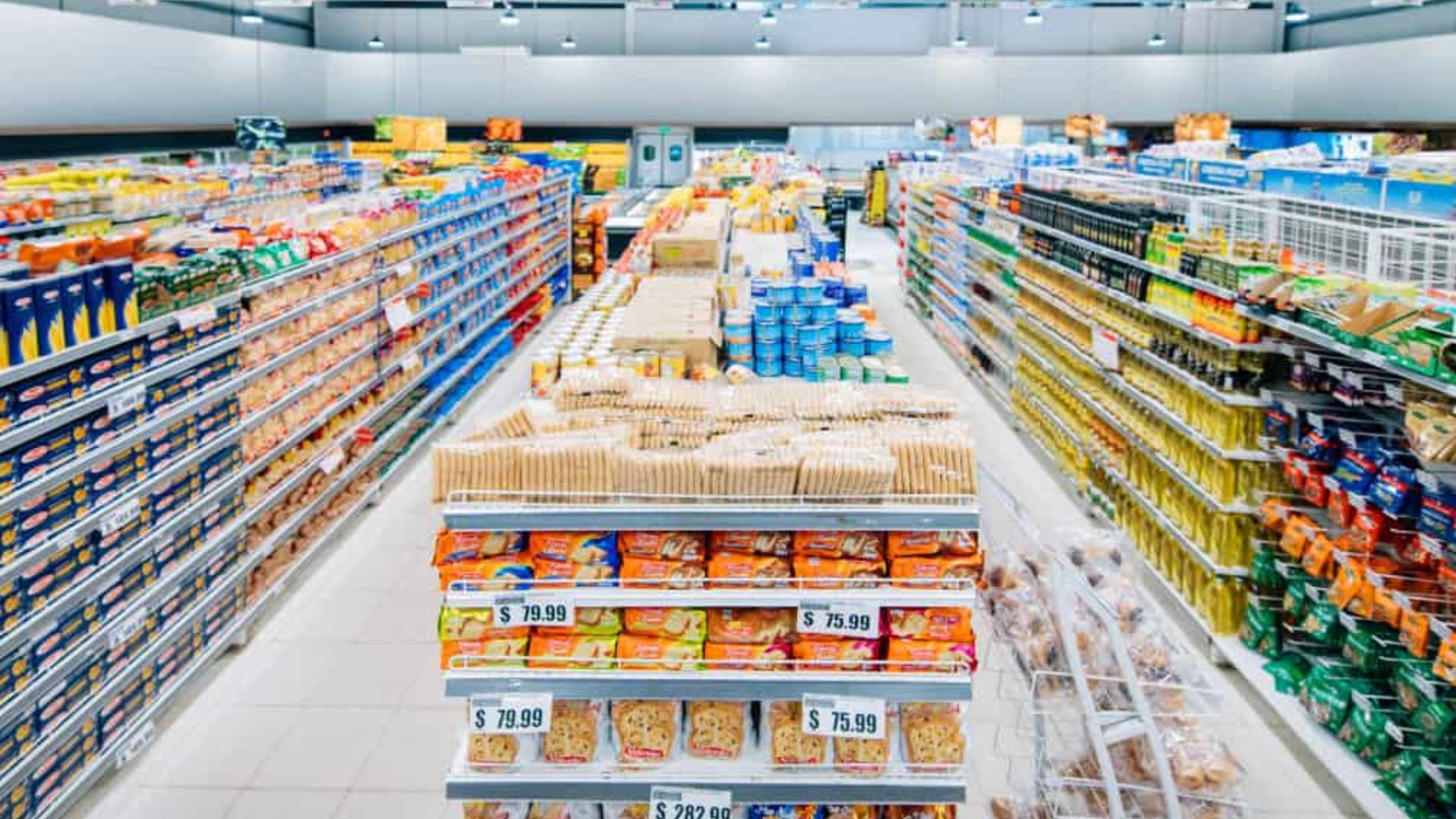Despite the growth of online shopping, in-store shopping remains vital, with 40% of consumers making in-store purchases at least once a week, compared to 27% shopping online weekly. Retail store performance metrics continue to be essential tools for measuring and optimizing in-store performance and understanding how consumers engage with physical retail.
As we head into 2025, these KPIs are evolving to capture insights on both traditional metrics and new trends, helping CPGs and retailers enhance shopping experience, operational efficiency, and profitability. This article explores the most impactful KPIs for 2025, empowering CPGs and retailers to stay ahead in a competitive landscape.
What are Retail Store Performance Metrics and KPIs?
Retail store performance metrics and Key Performance Indicators (KPIs) are quantifiable measurements used to evaluate how well a store is performing in terms of sales, customer engagement, and operational efficiency. These metrics offer CPGs & retailers data-driven insights that are essential for improving day-to-day operations and long-term strategies.
Tracking these metrics is critical for several reasons:
- Monitor Store Efficiency: Retail metrics help track the overall efficiency of a store’s operations, from sales performance to inventory management. Regular monitoring allows retailers to identify inefficiencies and optimize processes.
- Understand Customer Behavior: KPIs such as conversion rates and customer retention offer insights into shopping habits, preferences, and purchasing patterns, enabling more targeted marketing and better customer service.
- Enhance Financial Performance: Metrics like sales per square foot, average transaction value, and GMROI provide a clear picture of financial performance. By analyzing these KPIs, retailers can maximize profitability and resource allocation.
- Optimize Inventory Management: By tracking inventory turnover ratios, retailers can avoid overstocking or understocking issues. This ensures that high-demand products are always available while minimizing excess inventory costs.
- Improve Strategic Decision-Making: Data-backed decisions based on retail store performance metrics ensure that store owners and managers make informed choices about staffing, product placement, pricing, and promotions.
- Measure Marketing Success: Foot traffic and digital traffic metrics gauge the effectiveness of marketing campaigns. These KPIs help retailers refine their marketing strategies to drive both in-store and online engagement.
- Adapt to Changing Trends: Retail metrics allow businesses to stay agile in a rapidly evolving retail environment by spotting emerging trends early and adapting strategies to meet customer demands.
Let’s now explore the specific metrics that play a crucial role in optimizing retail performance and decision-making.
Optimizing Retail Performance Through Key Metrics
To ensure consistent growth and efficiency, CPGs and retailers need a robust system for tracking store performance. A set of key performance indicators (KPIs) and metrics can offer invaluable insights into the effectiveness of various store operations, from inventory management to customer engagement. Monitoring these metrics allows CPGs and retailers to make strategic adjustments, maximizing both space and resources to improve overall profitability.
Let’s learn the essential retail metrics that every store should track to optimize operations and drive revenue:
1. Sales Per Square Foot
Sales per square foot is a key performance indicator that assesses a store’s revenue generation relative to its physical space. It’s an essential metric for retailers because it measures how effectively they’re using available floor space to drive sales. High sales per square foot indicate that the store layout is productive, while lower figures suggest underutilization, which may require strategic adjustments to improve. This metric also provides insights into customer behavior and product appeal within specific areas of the store, helping managers make more informed decisions about product placement and inventory arrangements.
To calculate sales per square foot:
.png)
This value helps retailers understand productivity per area and identifies opportunities for improvement in layout design. Stores that consistently achieve high sales per square foot demonstrate effective use of their space, which can translate into optimized layouts that guide customer flow and facilitate easy access to popular items. By analyzing sales patterns, store managers can make targeted changes to displays, merchandise placement, and store sections that may be underperforming, ensuring each square foot contributes to maximizing revenue. This approach not only improves space efficiency but can also help retailers recognize whether a larger or smaller location might better serve their business goals.
We will need to have more on store execution KPIs like OSA, Share of Shelf, Planogram compliance, pricing compliance, Display compliance and Promo Compliance as well.
2. On-Shelf Availability (OSA)
On-Shelf Availability (OSA) is a metric that tracks how often products are available for customers without encountering stockouts. A high OSA ensures that products are accessible and sales potential is maximized. Monitoring OSA can help retailers identify and rectify stock gaps, optimizing the supply chain and preventing revenue loss.
To calculate on-shelf percentage:
.png)
A high OSA score indicates that the store is well-stocked, enhancing the shopping experience and maximizing revenue potential. Monitoring OSA helps owners identify problematic supply chain areas, respond proactively to replenishment needs, and improve customer satisfaction. This, in turn, strengthens brand loyalty and reduces missed sales opportunities due to product unavailability.
3. Share of Shelf (SOS)
Share of Shelf (SOS) refers to the proportion of shelf space a specific brand or product occupies relative to the total shelf space available. This metric is essential for assessing brand visibility and market competitiveness within a store.
.png)
SOS helps store owners and brand managers understand the effectiveness of their product placement strategies. A higher SOS usually correlates with increased customer attention and higher sales. By analyzing this metric, owners can make data-driven decisions on shelving, negotiate better placement terms with brands, and adjust merchandising to optimize the use of retail space.
4. Planogram Compliance Score
Planogram Compliance Score measures how well a store’s product displays adhere to the predetermined layout, which dictates optimal product placement for maximizing visibility and sales. Compliance ensures that the store's visual merchandising aligns with strategic objectives.
To calculate the planogram compliance score:
.png)
Maintaining high planogram compliance ensures that customers can easily locate products, enhancing their shopping experience. This metric helps retailers ensure consistency across multiple locations, identify areas for staff training, and optimize layouts to increase the likelihood of purchases. Higher compliance also strengthens brand partnerships, as brands prefer working with retailers who execute agreed-upon product placements accurately.
5. Pricing Accuracy
Pricing Accuracy tracks the consistency between a store’s displayed prices and the prices registered in the system. Accurate pricing prevents customer dissatisfaction and potential regulatory issues, maintaining trust and transparency.
To calculate the pricing accuracy:
.png)
Accurate pricing helps retailers avoid customer complaints, lost sales due to confusion, and potential legal challenges. Ensuring pricing accuracy builds customer confidence, leading to repeat visits and positive word-of-mouth. Monitoring this metric helps identify discrepancies that need immediate action and ensures consistency across all store locations.
6. Display and Promo Compliance
Display and Promo Compliance measures the adherence of in-store promotions and display setups to the planned marketing and merchandising strategies. Proper execution is crucial for maximizing the impact of promotional campaigns and improving the return on investment (ROI).
To calculate the pricing accuracy:
.png)
High display and promo compliance ensure that promotional campaigns are executed effectively, attracting customer attention and driving higher sales. By maintaining this metric, retailers can assess the success of marketing initiatives and make necessary adjustments to enhance their effectiveness. This metric also supports better coordination with brand partners who rely on stores to showcase their products as intended.
7. Gross Margins Return on Investment (GMROI)
Gross Margin Return on Investment (GMROI) is a critical metric that helps retailers measure how much profit they earn from each dollar invested in inventory. This metric allows retailers to see if their inventory management strategy is making the best use of their budget by showing which products yield the highest profit relative to their cost. For instance, if a clothing retailer stocks high-end jackets and basic t-shirts, tracking the GMROI for each can reveal which line is more profitable. If the high-end jackets bring in greater profit per dollar than the t-shirts, the retailer might allocate more budget to purchasing similar high-margin items or rethink their t-shirt pricing.
To calculate GMROI:
.png)
With this insight, retailers can strategically adjust stock levels and invest in more profitable product categories, optimizing inventory for maximum financial return. By analyzing GMROI across different product categories, the retailer can determine whether to continue investing heavily in high-end items or adjust their approach based on customer demand, thereby ensuring their inventory investments are as profitable as possible.
8. Average Transaction Value
Average Transaction Value (ATV) is a vital retail metric that provides insights into how much customers typically spend in a single visit. This measure not only reflects customer purchasing behavior but also serves as a barometer for overall store profitability. For instance, a café that sells both single-serve coffee and snack bundles might find that transactions with bundled snacks raise their ATV. By examining ATV, store managers can better understand how engaged customers are with the product mix. If the ATV is lower than expected, it may suggest that customers aren’t exploring the store’s full offering.
The formula for ATV is straightforward:
.png)
This metric empowers retailers to identify spending patterns, track customer preferences, and determine whether promotions, like buy-one-get-one deals, are effectively driving spending. Strategies to increase ATV often include upselling and cross-selling. In a clothing store, for example, suggesting complementary accessories at checkout can encourage customers to add more to their carts, raising the ATV. Small incentives, like discounts on bundled items, can similarly enhance customer spending, giving retailers a more profitable and engaging customer experience.
9. Customer Retention Rate
Customer Retention Rate (CRR) measures how successful a business is at encouraging customers to return for additional purchases, providing valuable insights into customer satisfaction and loyalty. A high CRR suggests that customers are happy with their experience and see value in return, while a lower rate can indicate a need for improved engagement tactics. For example, if a local bookstore notices repeat customers coming in monthly, this could reflect a strong retention rate and indicate success in their personalized recommendations or member discounts.
The formula to calculate CRR is:
.png)
Understanding retention goes beyond tracking loyalty—it helps businesses balance the costs of gaining new customers against retaining existing ones. For instance, a small coffee shop may find it more economical to keep regulars coming back through a rewards program than to focus solely on attracting new patrons. High CRR is often more cost-effective, making it a cornerstone for sustained growth, especially for businesses aiming to build strong, long-term customer relationships.
10. Conversion Rates
Conversion rate is a critical metric that shows the percentage of store visitors who end up making a purchase, helping retailers gauge how effective they are at converting interest into actual sales. Essentially, this metric offers insight into the store's appeal, product offerings, and customer experience. A high conversion rate indicates that the store is successfully encouraging visitors to buy, while a low rate might suggest areas needing improvement, like product presentation, pricing, or even checkout efficiency.
The formula to calculate conversion rate is:
.png)
For instance, consider a clothing boutique that notices its weekend conversion rate is higher than on weekdays. This might be due to enhanced in-store promotions, more staff on hand, or simply a different shopper mindset on weekends. By analyzing these trends, the boutique could adjust staffing or launch targeted promotions on slower days to boost weekday conversions. Other factors, like store layout and the level of staff interaction, also heavily influence conversion rates. By examining these elements, retailers can make strategic adjustments across various store locations, ensuring that each environment encourages conversions and improves the overall shopping experience.
11. Foot Traffic and Digital Traffic
Foot traffic measures the number of people who enter a physical store, while digital traffic tracks online sessions on a retailer's website. Together, these metrics provide a snapshot of a brand's visibility and the effectiveness of its marketing campaigns. For instance, a steady flow of foot traffic is often a direct result of successful local advertising, in-store promotions, or seasonal events that draw people into the store. Digital traffic, meanwhile, reflects how well online efforts like social media posts, search engine optimization (SEO), and email campaigns are driving potential customers to visit the brand’s website.
These metrics are calculated simply by tallying entries:
.png)
An increase in either metric typically signals effective outreach efforts and a strong brand presence, which often correlate with higher sales and a stronger customer base. For example, a boutique that hosts a “holiday launch party” may notice a significant spike in foot traffic over that weekend, reflecting successful local promotion and interest. For digital traffic, a well-timed social media campaign for a new product can lead to increased online visits and potentially higher online conversions. Retailers looking to improve both metrics might leverage SEO for digital visibility and organize local in-store events to increase foot traffic, helping boost their overall brand impact and reach.
12. Inventory Turnover Ratio
The inventory turnover ratio measures how quickly a retailer can sell and replace its inventory within a specific time frame. This ratio is an essential indicator of stock management efficiency, showing whether a store can maintain a steady flow of inventory without overstocking or understocking. A high inventory turnover ratio signals strong demand and efficient inventory use, meaning that products are moving swiftly off the shelves and freeing up space for fresh stock. In contrast, a low turnover ratio suggests slower sales or overstocked items, which can lead to additional holding costs as unsold items occupy valuable space.
The formula for calculating the inventory turnover ratio is as follows:
.png)
Retailers also need to consider seasonal trends when analyzing inventory turnover. For example, items like holiday decorations or seasonal apparel may experience a surge in demand around specific times of the year, such as the holiday season, causing a temporary spike in the turnover ratio. By anticipating these fluctuations, retailers can adjust stock levels in advance, ensuring that they have enough inventory to meet the increased demand while avoiding overstock after the season ends. This nuanced approach helps retailers keep a balanced inventory year-round, saving costs and aligning with customer needs.
Now that we’ve covered the critical metrics for optimizing retail performance, let’s look at some key points CPGs and retailers should keep in mind to ensure effective tracking and application of these KPIs.
Things to Remember for CPGs and Retailers When Tracking KPIs
As consumer packaged goods (CPG) companies and retailers focus on these KPIs, a few considerations can enhance the effectiveness of tracking efforts:
- Regular Monitoring: Consistently tracking metrics like sales per square foot, conversion rates, and inventory turnover helps spot trends and inefficiencies early on.
- Integrating Technology: Tools like Paralleldots' ShelfWatch offer real-time insights into product placement and shelf compliance, making it easier for retailers to adjust their strategy and improve performance.
- Personalization and Customer Experience: Focus on personalized experiences and seamless omnichannel integration to meet evolving consumer expectations.
Also read: Return on Investment : Why CPG Leaders are using Image Recognition for Perfect Store Execution
Conclusion
In conclusion, tracking retail store performance metrics and KPIs is indispensable for retailers aiming to boost operational efficiency, refine customer experiences, and drive financial growth. These insights enable retailers to make informed decisions about everything from inventory management to customer engagement, ultimately contributing to a store’s profitability and brand loyalty.
Despite the growth of e-commerce, brick-and-mortar stores remain a crucial part of the retail landscape. As we see with the strong weekly in-store shopping habits of consumers, physical stores are here to stay. The future of retail lies in combining the unique advantages of in-store shopping with advanced digital tools to optimize every aspect of the retail experience.
To further enhance store performance, consider how Paralleldots' ShelfWatch can bring advanced insights into shelf compliance and product placement, helping you maximize your store's layout and inventory. Book a demo today to explore the full potential of data-driven retail optimization.


